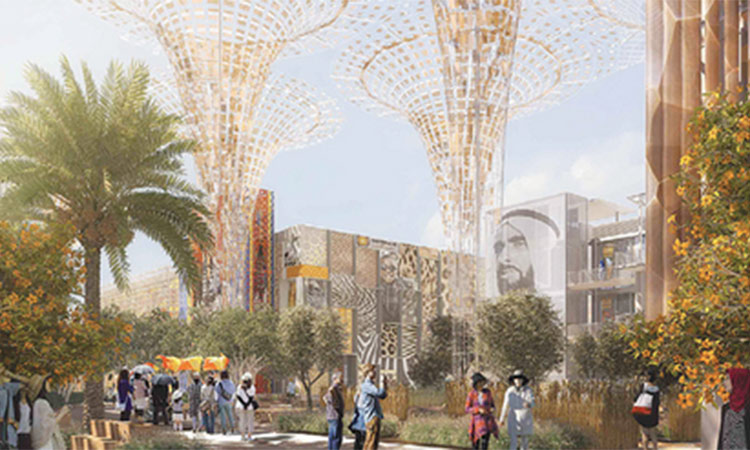UAE, Philippines sign agreement to bolster economic and trade ties

Key officials from UAE and Philippines during the bilateral meeting.
Both sides have agreed to launch the negotiations for a future CEPA that will strengthen trade, enhance investment flows, remove unnecessary barriers to trade, and create new business opportunities. Further, the Philippines and the UAE are headed towards unprecedented economic relations as the two countries concluded negotiations for the Investment Promotion and Protection Agreement (IPPA).
Philippines Department of Trade and Industry (DTI) Secretary Ramon Lopez and UAE Minister of State Ahmed Ali Al Sayegh recognised the signing of the start of negotiations for the CEPA and committed towards the eventual signing of the IPPA.
After the bilateral meeting, Secretary Lopez and UAE Minister for Foreign Trade Dr Thani Al Zeyoudi signed the joint statement formally announcing the intent to pursue CEPA.
The cooperation between two countries adds another leaf to the success of the ongoing Expo 2020 Dubai in forging stronger connections and opening more opportunities for economic growth and prosperity.
The UAE is the Philippines’ biggest export partner in the Middle East. In 2021, the total trade between the Philippines and the UAE grew by 34.7 per cent to reach Dhs3.5 billion ($951 million) from Dhs2.6 billion ($705 million) in 2020. In terms of investments, the UAE ranked as the 17th top source of approved investments in 2019, valued at Dhs48 million ($13.2 million).
During the Philippines Country Business Briefing held in parallel with the Philippines National Day at Expo 2020 Dubai, the Philippines welcomed Letters of Intent from GCC companies. These LOIs are expected to bring in Dhs2.2 billion ($600 million) worth of investments and generate 4,000 job opportunities in the country’s healthcare, energy, tourism and hospitality, and dairy industries.
Secretary Lopez said: “These initiatives are expected to boost trade and investments between two countries, leading to more diversified economic activities, development of new industries, employment generation, and higher consumer spending as we partner for shared prosperity. The Philippines may serve as a UAE’s strategic hub for the Southeast Asian region, as economic activities continue to shift to Asia. Active engagement between government and business sectors is key in ensuring that both countries will maximise benefits of the Agreements, including diversifying and expanding economic interests.”
Lopez highlighted that this is an opportune time for UAE investors as the Philippines develops the necessary investment landscape through significant economic and regulatory reforms such as the liberalisation of the Public Service Act, Retail Trade Law, Foreign Investments Act, the CREATE Act and the aggressive Build Build Build programs of the Duterte administration.
These are supported by the Philippines’ efforts to improve ease of doing business by streamlining government processes, reducing processing time, and cutting bureaucratic red tape. The opportunities for FDI into several activities are broader and coupled with the IPPA, these investments will reap the benefits of all these reforms and agreements.
Bangkóta is the name and inspiration for the pavilion of the Philippines at the World Expo 2020, which will be held from Oct.1, 2021— March 31, 2022 in Dubai, United Arab Emirates.
The pavilion, organically shaped like the Bangkóta—the ancient term for “coral reef” in the language Tagalog—updates knowledge about the Philippines, an archipelagic nation that nourished a collective, sea-oriented culture for millennia.
By calling attention to the coral reef-like qualities of Filipinos—such as an inclination for hyper-connectivity—the pavilion offers clues into a people who can build vibrant communities anywhere and everywhere in the world.
Remaining interconnected with each other as Filipinos, even through massive diaspora, the Philippines’ global stage is held together digitally. In the past 4000 years, as their Austronesian ancestors spread throughout island Southeast Asia and then embarked across the Pacific, they were and still are connected by the oceans of the world.
The Philippines pavilion evokes this hardy, travelling people in the sustainability District of the Expo, poetically emphasising cultural sustainability through the millennia. In a plot size of 3163.25 sqm, the pavilion presents contemporary expressions in architecture, art, and design that links the deep past with the future of connectivity for the Filipino.
It is conceptualised and actualised by Architect Royal Pineda of Budji+Royal Architecture+Design and independent curator Marian Pastor Roces, collaborating with unusual synchrony with Assistant Secretary Rosario Virginia Gaetos of the Department of Trade and Industry, who also serves as Alternate Commissioner General of the Philippine Organizing Committee.







